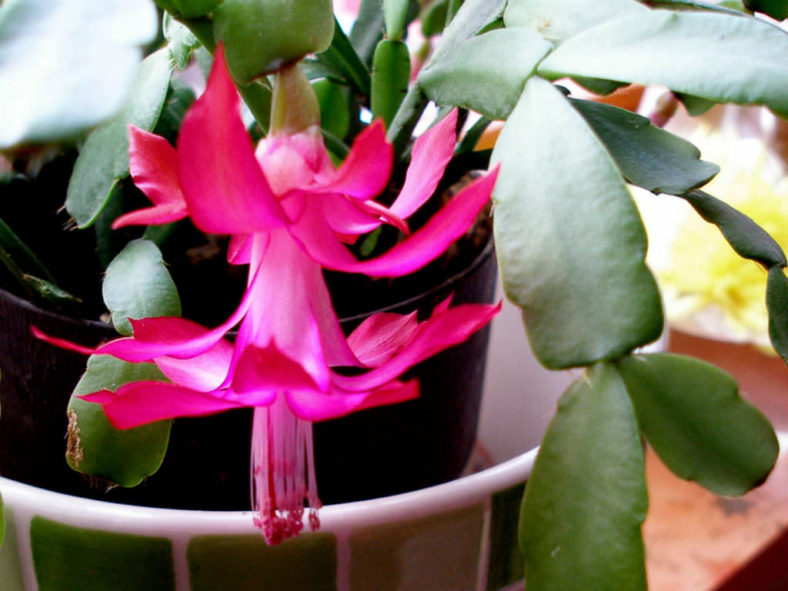Schlumbergera × buckleyi, commonly known as Christmas Cactus or True Christmas Cactus, performs best indoors but also thrives in sheltered areas outdoors in USDA hardiness zones 10 to 12. An established Christmas Cactus typically suffers few problems, although some may develop red-tinged foliage due to poor growing conditions, infections, or inadequate care.
Cultural Stress
Cultural stress is one common reason Christmas Cactus develops red foliage, specifically if it is exposed to direct sun in summer or does not receive enough water. As a tropical forest plant, this cactus performs best in partial shade during warm seasons. However, it prefers full sunlight during midwinter and requires slightly more water than other cacti. Therefore, it should be watered whenever its soil feels dry 1 inch (2.5 cm) below the surface. If an established Christmas Cactus develops reddish foliage but otherwise appears healthy, evaluate its light exposure and move it if necessary. Likewise, adjust the soil moisture level and do not allow it to dry out for too long between waterings.

Root Infections
Overwatering causes damage to roots both by limiting their oxygen exposure and by weakening their tissue. Root rot is a typical result of overwatering. It is characterized in Christmas Cactus by mushy tissue, wilting, and pink or reddish discolorations on the leaves. Another tell-tale sign of root rot is the soil's musty or sour smell. An affected plant should be repotted into fresh, unused potting soil and left unwatered for 2 to 3 weeks. Prune off the badly damaged foliage and slowly return the plant to a regular water schedule by letting the soil dry out in the top 1 inch (2.5 cm) between waterings. Disinfect pruning blades before and after use by wiping them with rubbing alcohol.
Pathogen Infestations
Christmas Cacti may develop an infestation of Cactus Cyst (Cactodera cacti) if potted in contaminated soil or propagated from an infected plant. As a nematode, Cactus Cyst primarily affects the roots but can cause a host of symptoms in the foliage. Stunted growth, wilting, and reddish discolorations are common symptoms, but the most unmistakable sign is seen on the roots as tiny, pearl-like masses. Treatment of Cactus Cyst is complex and seldom successful, so prevention is the key. First, pot the plant in fresh, sterilized soil inside an unused pot and keep it off the ground to limit contact with infected soil. If an infestation occurs, discard the plant to keep the pathogen from spreading.
Nutrient Deficiency
Red or purple-tinged foliage and wilting are two common magnesium deficiency symptoms, a common ailment in Christmas Cacti. It occurs mainly during the winter when feeding and watering are restricted, and cold temperatures slow the plant's nutrient uptake. In winter, the cactus does best at temperatures around 55 to 65 °F (13 to 18 °C). Correcting a magnesium deficiency can be done with Epsom salts. It usually helps provide a supplemental feeding of 1 teaspoon of Epsom salts dissolved in one gallon (3.8 l) of water. Pour the mixture into a spray bottle and spritz the tops and undersides of the foliage. Reapply the mixture every two weeks until the foliage returns to its original color.
Source: sfgate.com
Links
- Back to genus Schlumbergera
- Succupedia: Browse succulents by Scientific Name, Common Name, Genus, Family, USDA Hardiness Zone, Origin, or cacti by Genus